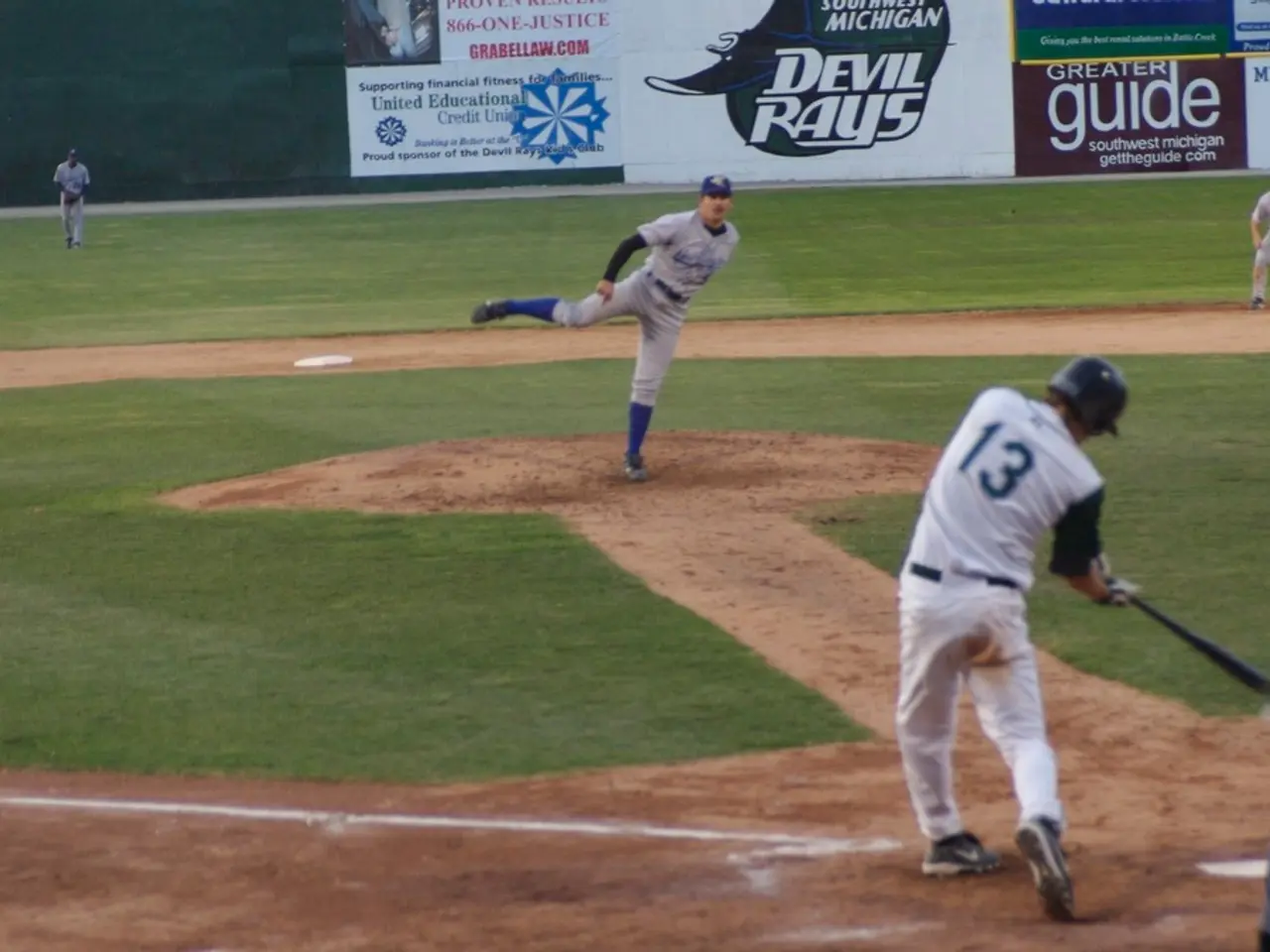Medical professional swiftly revives stricken Little League umpire on field mid-game
In a heart-pounding incident that took place on a baseball field in the Ladera Heights neighbourhood, Little League umpire Jeff Hiserodt collapsed from a heart attack. The dramatic event was captured on camera, leaving spectators in shock as Hiserodt's colleagues and kids surrounded him, calling out for help from the bleachers.
Hiserodt, who is still in a lot of pain and feels like he was hit with a baseball bat, wants to express his gratitude to everyone who helped him, including Dr. Jen Poole, a palliative care doctor at Cedars-Sinai, who played a crucial role in saving his life.
Dr. Poole, who was not on duty at the time, rushed to help Hiserodt despite resuscitating strangers not being her specialty. She performed CPR on Hiserodt for between seven and 10 minutes, restarting his heart multiple times. Watching the video back, Hiserodt is in awe of Dr. Poole's actions.
"She's not a very big lady to get through all the resuscitation efforts," Dr. Poole joked, humbly brushing off the praise. Hiserodt, however, attributes his survival to the off-duty doctor.
The incident serves as a stark reminder of the importance of knowing CPR and having defibrillators in community spaces. According to the Centers for Disease Control and Prevention, someone suffers a heart attack every 40 seconds in the United States.
Current guidelines emphasize the importance of having Automated External Defibrillators (AEDs) readily available in various public spaces to improve survival rates in sudden cardiac arrest (SCA) cases. AEDs are required in many public and institutional settings, with specific occupancy thresholds. For example, in California, AEDs are legally required in public swimming pools, health studios, fitness centers, assembly buildings with occupancy greater than 300, and various types of buildings (business, educational, factory, institutional, mercantile) with occupancy of 200 or more.
Public access AEDs should be readily accessible and available 24/7 in busy and remote public spaces, such as parks and sports complexes, to provide immediate help during an emergency. Staff in these venues are often trained in AED use, and AEDs are installed in unlocked cabinets for public use.
National guidelines prioritize early defibrillation, focusing on increasing awareness, removing barriers to access, and improving training across communities to enhance bystander CPR and AED use. AED placement is recommended in high-traffic public areas like shopping malls, airports, and sports stadiums to ensure rapid access during cardiac emergencies. Fitness centers are critical locations for AED installation due to the higher risk among people engaging in physical activity.
In summary, current guidelines strongly advocate for the placement of AEDs in public spaces with significant occupancy or activity, ensuring they are accessible, staff are trained, and the public can use them immediately in case of sudden cardiac arrest. This approach significantly increases the chance of survival by providing defibrillation within the critical first few minutes.
Both Hiserodt and Dr. Poole hope that their story will emphasize the importance of being prepared to support people who are injured or hurt, and they encourage everyone to learn CPR and support the installation of defibrillators in community spaces.
- Dr. Jen Poole's quick action in performing CPR and utilizing her expertise despite not being a specialist in resuscitating strangers, significantly highlights the importance of mental preparedness and skill in health-and-wellness situations, such as fitness-and-exercise environments like sports complexes and health studios.
- The health crisis Jeff Hiserodt faced on the baseball field underscores the significance of science-based approaches, like the use of Automated External Defibrillators (AEDs), in promoting mental health and wellbeing, not only for individuals but also for communities, particularly in sports and sports analysis.
- Fitness-and-exercise, sports, and sports analysis embrace the role of science and advanced technology, particularly with the implementation of AEDs, in fostering a safer and healthier environment for athletes and spectators alike, ultimately contributing to mental health and overall wellness.




